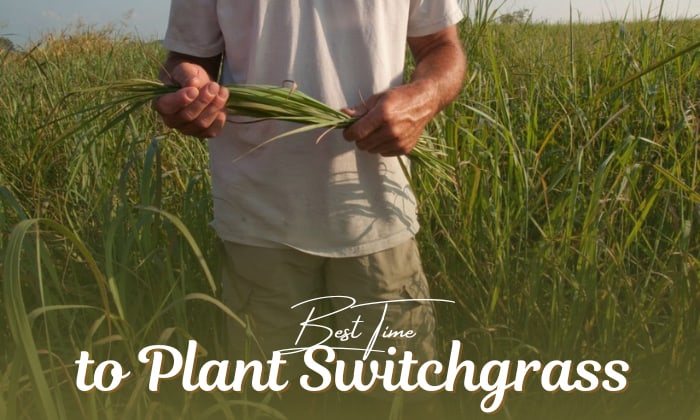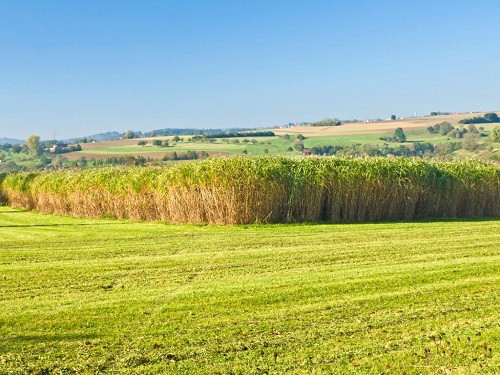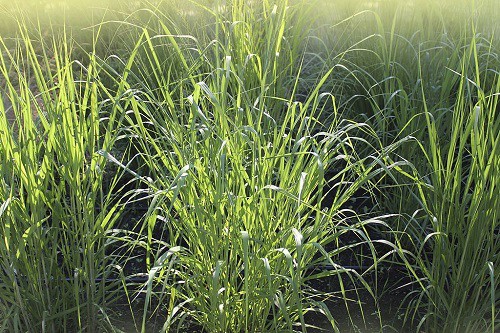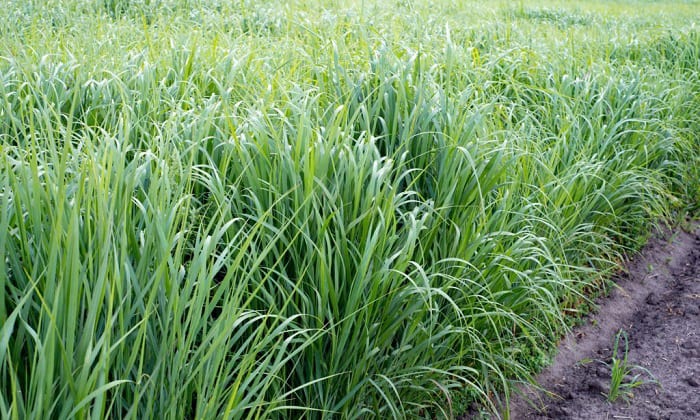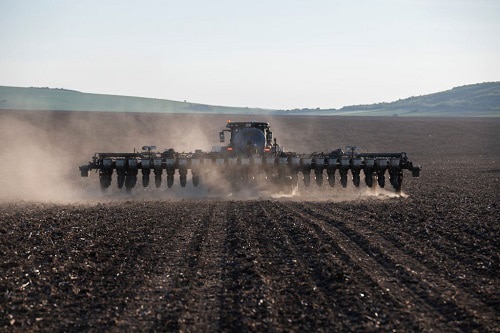Switchgrass is a perennial that tolerates drought and pests well. It also adapts to slopes and clay soil while providing forage for deer, making it a very useful grass to grow in gardens.
For those unsure when to plant switchgrass, September 15 to March is the best time for dormant seeding and stratification. But if you have pre-stratified seeds, you should sow them in spring, around April and May.
Read below for more detailed recommendations.
Table of Contents
Best Time to Plant Switchgrass
1. Frost-seed switchgrass in the fall or winter from September to March.
Many seeds, including switchgrass, must undergo a period of cold treatment or stratification to break dormancy and germinate. For this reason, it is best that you sow switchgrass when temperatures are consistently under 56℉, or around Labor Day to September 15 and October.
At the latest, you can spread seeds up to two to four weeks before spring green-up or before the grass comes out of dormancy around March. The freeze-thaw cycles will crack the seeds open and allow them to germinate when temperatures reach 60 degrees.
2. Sow switchgrass outdoors or indoors around April and May if you have pre-stratified seeds.
If you have money to spare and missed the window for planting switchgrass in fall and winter, I recommend buying pre-stratified seeds.
These will be more expensive than regular seeds that need cold treatment, but they will allow you to sow switchgrass in spring when temperatures reach 60 degrees Fahrenheit — no need to worry about stratification.
Typically, the planting time following this method will be April and May, but some regions will allow seeding up until mid-June.
You can also cultivate grass indoors this way. The guideline is the same as in-ground planting regarding temperatures.
Just put the seeds in warm potting soil and place them near a sunny window. The switchgrass seedling will be ready for transplanting after a year of growth, also in the spring when the weather is no longer frosty.
3. Plant nursery switchgrass whenever the soil is workable and frost-free.
If you have a big nursery switchgrass plant instead of seeds, put it in the ground whenever there’s no frost. Simply dig a hole as wide as the plant and make sure the roots have space to spread.
You can imitate the sowing depth in the original container while shoveling holes for planting.
4. Planting time in different states
| State | Planting time |
| Missouri | April, May |
| Mississippi | Mid-July – late August; April, May |
| Kentucky | Mid-May – mid-June |
| Kansas | March 25 to April 30 |
| Alabama | March – July |
Switchgrass Varieties
Below are some common switchgrass varieties and their characteristics. When selecting a cultivar to grow, pick one that matches your climate.
| Variety | Best for | Biomass Yield (estimates only; as the numbers will differ depending on the region) |
| Blackwell | Upland areas with light soil. Suit south-central and eastern states and possess high disease resistance. | 3 to 5 tons/acre |
| Cave-in-rock | Cave In-Rock switchgrass is excellent for waterways and wildlife nesting areas. It also adapts well to eastern states and the Midwest. | 2.5 to 5 tons/acre |
| Sunburst | Upland areas; North Dakota, South Dakota, and Minnesota. A good source of bioenergy. | 3 to 5 tons/acre |
| Kanlow | Lowland soil with poor drainage and central US. | 4 to 7 tons/acre |
| Alamo | Lowland soil and the majority of the US. Great switch grass hay and winter cover for wildlife. | 4 to 7 tons/acre |
Related:
Tips for Successful Switchgrass Planting
1. Site selection and preparation
Choose a garden plot with full sun, sandy soil, and a pH of 5.0 to 8.0. Although switchgrass may grow in wetlands or clay ground, it’s best not to put it in either of these areas.
You should also clear the soil of all vegetation, such as weeds and grass, by using a broad-spectrum herbicide.
Once done, it’s time to determine how many pounds of seed per acre you need. The typical switchgrass seeding rate is 7 to 10 pounds of PLS or pure live seeds per acre, which means you’ll need at least 28 pounds of PLS if your land’s acreage is four.
When buying switchgrass, check out the pure live seed number on the package, but if it’s not available, you can calculate it using the formula:
Percentage of seed purity x germination percentage / 100 = PLS
Suppose you have a switchgrass that is 97% pure with a germination rate of 80%; the grass’s PLS would be: 97 x 80 / 100 = 77.6%. If your planting involves a switchgrass seed 50 lb bag, you can expect 38.8 pounds of the seeds to germinate within the first year.
2. Planting technique
When it comes to planting techniques, no-till drilling and broadcasting are two popular choices. Of these methods, drilling is better if your soil is wet or previously had sod.
- Design-wise, a no-till drill will have a hopper box where seeds are stored, coulters to loosen up the soil, and openers to let the seeds fall into the ground. Before starting, it’s essential that you adjust the press wheels to ensure the planting depth is correct.
As for the seeding rate, the manual of your drill is a useful resource. There may be a gearbox with ranges and a driveshaft gearing to calibrate the distribution rate. A meter box with notches to suit different seed sizes will also be available.
- For those who choose broadcasting, plow the field and drive over it with a tractor and a spreader to distribute the seeds. Then roll or cultipack the soil to ensure adequate seed contact.
With both methods, follow a planting depth of ¼ to ¾ inch, with the latter number being recommendable for coarse soil only.
Finally, remember that switchgrass care involves regular watering to keep the ground damp. Avoid fertilizing unless your soil test recommends it.
Frequently Asked Questions
How long does switchgrass last?
Switchgrass can live for up to ten years or longer, but you’ll need to burn the stand every three years for maintenance.
How tall will switchgrass grow the first year?
If you’re wondering how fast does switchgrass grow, they can reach four to six inches within the first year or so, though you should keep the blades no taller than four inches before they become established.
How long does it take to establish switchgrass?
Switchgrass will take three years to establish itself, so don’t be discouraged if your stand looks less than stellar once spring comes.
Does switchgrass reseed itself?
Yes. But you can collect the seeds after flowering occurs and store them until planting instead of letting the seeds distribute themselves.
What are switchgrass growth stages?
Switchgrass’s growth stages consist of vegetative development, transitional phase or floral induction, and reproduction or flowering (which includes the boot stage).
Conclusion
Though switchgrass takes longer to establish compared to many types of plants, we think its perennial nature and numerous colors make growing this crop worth it.
If you’re still contemplating when to plant switchgrass, leave us a message and share your thoughts. Until then, have a nice day!

Hi, I am William – Floridayards’ digital content creator. My job is to find answers to all your concerns with thorough research and our team’s expert advice. I will also bring you honest reviews on the best products and equipment for raising your beautiful garden. Please look forward to our work!


